Spraying is the production of defined droplets of fluids in a surrounding gas phase. The product produced from atomisation is referred to as the spray. Ideally, a spray is desired in which all droplets have an identical diameter. This ideal spray has a monodispersed droplet-size distribution, in which case the specification of an individual droplet diameter suffices in order to describe the characteristics of this type of spray.
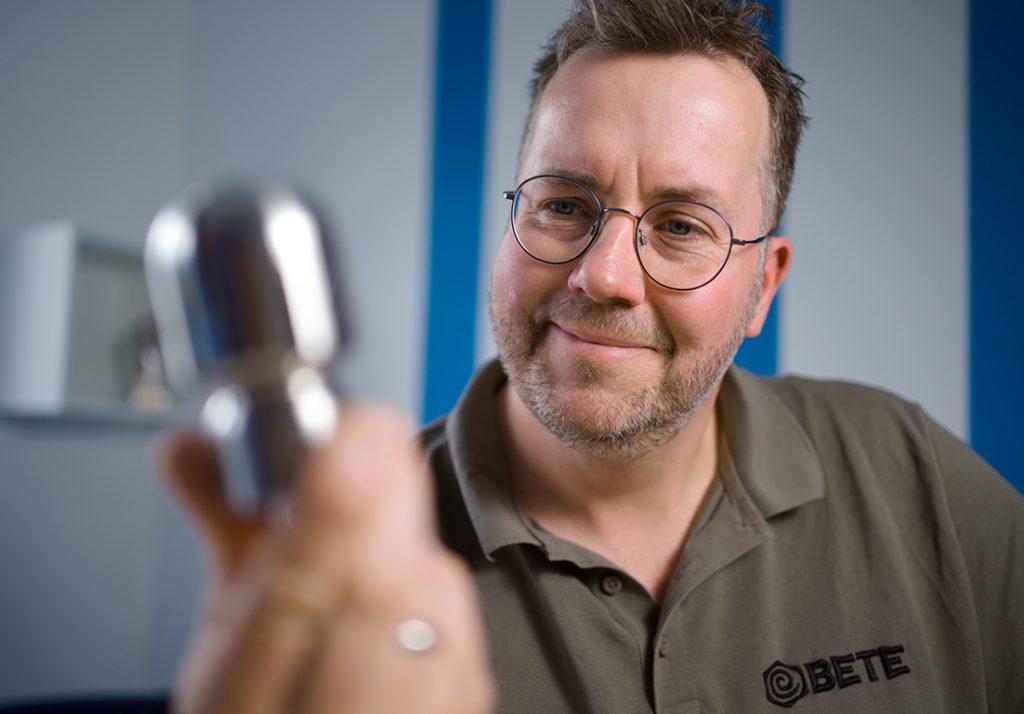
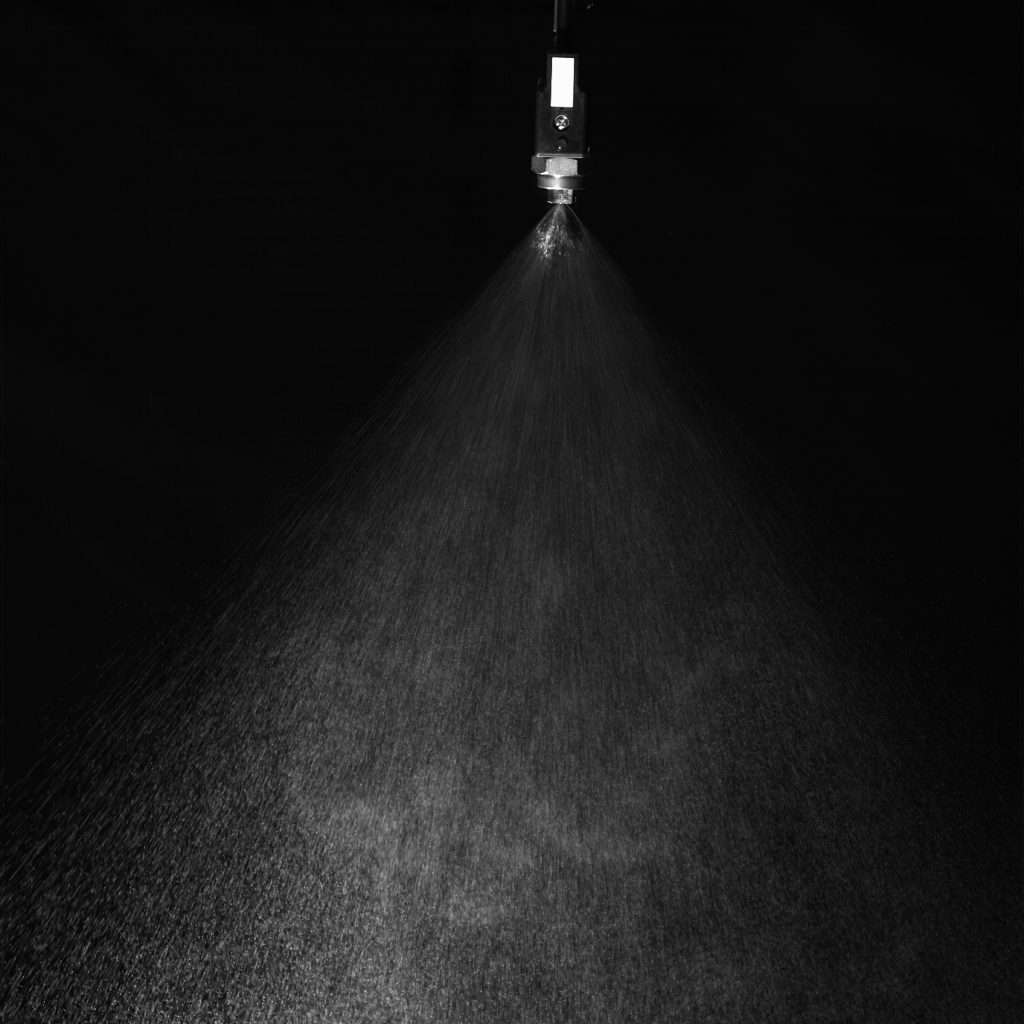
The spray angle selected for a specific application depends on the size of the area to be sprayed. Since the fluid droplets immediately after exiting the nozzle are influenced by external factors, such as gravitation, gas flows, etc., the spray angle is measured in order to determine the spray coverage as a function of the application at a distance of 100 to 1000 mm. We are happy to perform individual spray tests in our highly specialized spray laboratory by appointment. The following diagram shows the theoretical spray coverage (E) at a distance (D) as a function of the spray angle (A). The effective spray angle (C) is smaller than the theoretical angle (E) and can be calculated from the actual spray coverage (B).
Many technical processes, such as gas scrubbing, depend on producing the largest possible contact surface area between a fluid and a gas flow. Achieving the greatest possible contact surface area requires the fluid to be broken up into the smallest possible droplets. Technically, this can be realized by means of the following parameter changes:
In practice, a nozzle produces droplets from a compact flow of fluid within a specific size range. Since it is impractical to list all produced sizes, the droplet size (in µm) normally is specified as D32 Sauter diameter. Further, it is important to be familiar with the various diameter-related terms.
The definitions of the most frequently used diameters are listed in the following:
Volume Median Diameter DV0.5
The diameter which divides the overall volume of the droplets into two equal halves. Correspondingly, one-half of the overall volume consists of droplets with a smaller diameter, and the other half of droplets with a larger diameter.
A DV0.5=200µm means that 50% of the total volume of fluid sprayed is in droplets which have diameters smaller than 200µm. This does not mean that, in terms of number, 50% of the droplets are smaller than 200µm.
At this point, it should be noted that the data of a single characteristic droplet diameter is by no means sufficient to describe the entire droplet spectrum of a spray comprehensively. Two sprays with exactly the same volume diameter DV0.5 do not necessarily have the same specific surface area.
Volume Mean Diameter D30
The diameter of a droplet, whose volume, when multiplied with the total number of droplets, equals the total volume of the sample.
Arithmetic Mean Diameter D10
The arithmetic mean of the diameter of all droplets in the spray sample.
Sauter Mean Diameter D32
The Sauter mean diameter is best suitable for characterizing a spray. The volume-to-surface ratio for the mean diameter is the same as for the entire spraying volume. For this reason, one frequently applies the calculation of substance and thermal transition processes of the Sauter mean diameter.
90% Volume Diameter DV0.9
90% of the overall volume of droplets is less than or equal to the specified droplet diameter. A DV0.9=200µm, for example, means that 90% of the overall volume consists of drops that are less than or equal to 200µm. This characteristic droplet diameter is of vital importance to the evaporation and cooling processes where complete evaporation is required.
10% Volume Diameter DV0.1
10% of the total volume of droplets is less than or equal to the specified droplet diameter. For example, a DV0.1=200µm means that 10% of the total sprayed volume of droplets is less than or equal to 200µm. This characteristic droplet diameter frequently serves as a decision-making criterion as to whether droplets of a specific size are carried along by a gas flow. The DV0.1 can serve to select a suitable droplet separator.
Swirl nozzles generally create larger droplets than spiral nozzles. Air-atomizer nozzles, such as the XA or SA series, typically produce the smallest droplets of all nozzles.
Spray nozzles must meet varying requirements. BETE Deutschland will consult with you in selecting the optimal nozzle for your specific application.
The following spray forms are frequently used in spraying techniques:
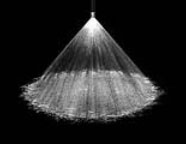
With a full-cone nozzle, the impact area will be completely covered by a single spray. With axial full-cone nozzles, this spray pattern is created as a result of installing a so-called swirl body. The full-cone nozzles subjected to the tangential inflow have no installed components in the flow channel and by means of rotation and defined swirl chambers produce a full-cone spray pattern. The spiral nozzle represents a special design form.
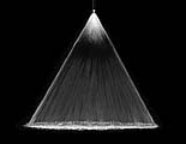
Due to the special outlet geometry, flat fan nozzles initially form a closed fluid film, which in the course of processing disintegrates into individual droplets. Depending on the design of the outlet geometry, this produces an elliptical or rectangular impact surface.
Because of their functionality, tongue nozzles have a special place among flat fan nozzles: The fluid stream exits axially through a cylindrical outlet bore and then is diverted by means of an external deflector surface.
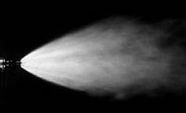
As a result of a combination of replaceable air and fluid caps, pneumatic atomisation nozzles are able to produce flat-fan, hollow-cone, and full-cone spray performances. The droplets produced by pneumatic atomisation nozzles are among the smallest achievable in industrial spray technology.
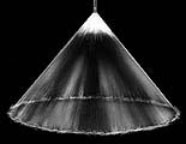
If annular impact area is created, this is referred to as a hollow-cone spray pattern. As a rule, the fluid flows tangentially into the swirl chamber. There the fluid is displaced by rotation and a fluid film is created, which disintegrates into individual droplets immediately after the nozzle orifice. Axial hollow-cone nozzles, in which the fluid flows axially into the swirl chamber where it is rotated by means of a special swirl insert, are the exception.

A corresponding design of the nozzle orifice produces a solid fluid stream characterized by high stream stability and high impact intensity. The actual spraying process, the disintegration of the individual droplets, is undesired with solid stream nozzles and is suppressed in a targeted manner by the nozzle's geometry.

BETE Deutschland GmbH
Dr.-C.-Otto-Straße 190
44879 Bochum
+49 234.93 61 07-0
info@bete.de
Pneumatic atomization nozzles
Tank cleaning nozzles
Air nozzles
TurboMix™